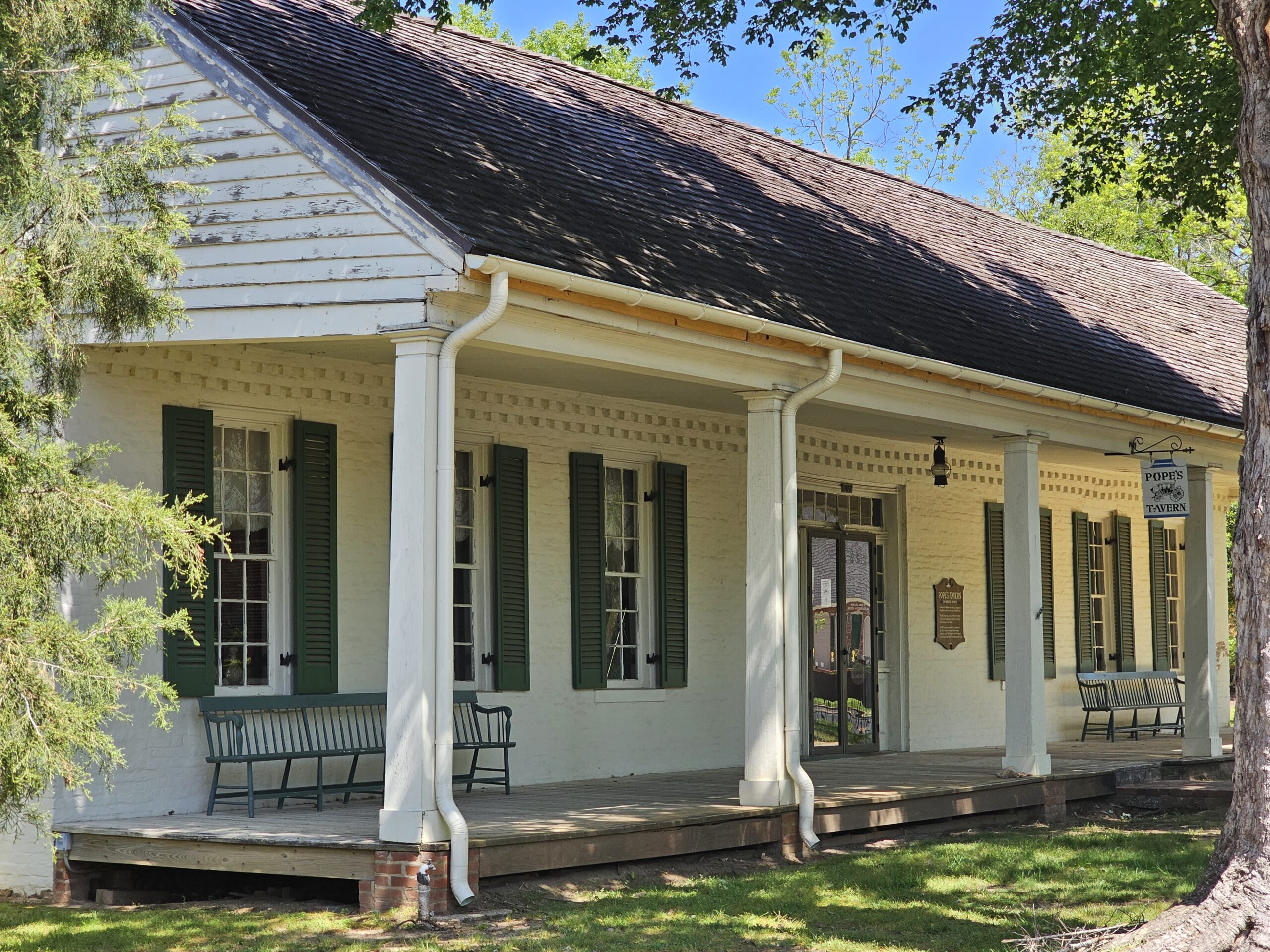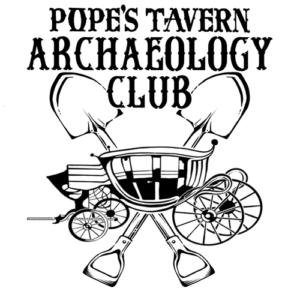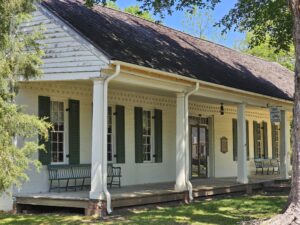February 2023
Spring has not yet arrived in northwest Alabama. Not officially anyway. But Southern weather abides by no rules but its own with little regard to seasons and scientific patterns. So, it surprises no one that the towering magnolia tucked into the corner of Seminary Street and Hermitage Drive in Florence, Alabama is already unfurling its smooth pink and white petals. They flutter gently in the breeze – a breeze that one day blows warm with the threat of looming, long summer days and the next with gnawing cold as winter desperately tries to hold on just a bit longer.
You’d be forgiven, if in passing, you missed that swaying magnolia, the yard strewn with pink petals, or the aging house that sits quietly in its shade. Unless you spied the historical plaque at the edge of the property, you might think of it as just another old house, of which there is no shortage across the deep South. But this antebellum home hides more than just peeling paint and creaky floorboards. Within its walls, and even within the very soil it sits on, lie buried countless untold stories and a mystery still unsolved.
Welcome to Pope’s Tavern.

It’s a cool mid-February afternoon as I stand beneath the swaying magnolia behind Pope’s Tavern. Pink and white petals float lazily down and land in my hair. A gift, maybe. Or perhaps a good omen for the day’s activities. They scatter across the waterlogged lawn bringing a burst of color to the puddles that stubbornly remain. The rain has seemed incessant over the last few months, and this beautiful (and dry) afternoon is a welcome reprieve from the endless dreary days.
On the folding table in front of me are scattered bits of glass and pottery, a couple of tubs of muddied water, and a few paper towels that threaten to blow away with the petals. We huddle around it, gently scraping dirt and debris from tiny slivers and rusty old nails, each one a precious discovery from the month before. We are small in number, but huge in passion, for the project unfurling before us. We talk and laugh, enjoying each other’s company, beneath the flowering tree.
Leaving behind the array of artifacts to dry in the sun, we turn our attention to the carefully dug hole in the side yard. With each passing month, it grows a bit deeper and reveals a bit more of its secrets. We’ve been working in this pit for a while now, painstakingly peeling back layer after layer of dark soil. We marvel at every tiny piece recovered, especially when something new or unusual emerges from the earth. Perhaps today it will be a piece of painted pottery or a color of glass we haven’t seen yet. Maybe another marble will make an appearance. Or, perhaps, we’ll just add bits of brick to our growing pile.
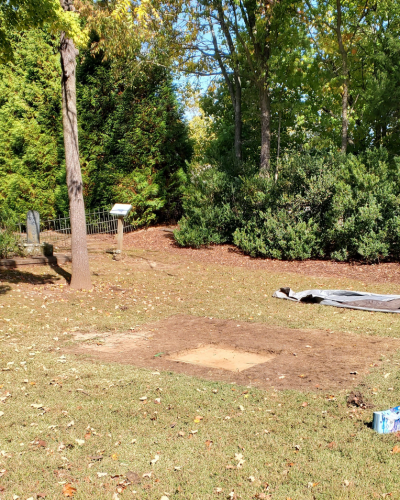
Whatever it may be, however small and insignificant it might first appear, we are slowly piecing together the history of Pope’s Tavern. Not the folklore and wishful thinking of so many, but the real story, the true story of what happened here. And while we would love nothing more than to dig up some tangible evidence of any one of the magnificent stories that the Tavern has given birth to over the generations, we are happy to contemplate the meaning of what we find on a much more realistic scale. Who was the last child to play with the red marble I found fully intact within the test pit? Did he scramble around the yard, desperate to find it before finally giving up with a long sigh to return home for dinner? Did a little girl, running through the yard, unknowingly lose that lone marble as she played and skipped along? Did a builder, toiling away in the summer sun, drop those square headed nails we so often find? Did they slip from his grip as he worked or did he kick over the pouch holding them as he moved about? Who ate from the broken plates, sipped from the shattered bottles? What stories of love and life and sorrow and triumph are represented in those bits drying in the sun?
So often, history is told from the viewpoint of larger-than-life figures. We hear the great and monumental stories. We see the broadest strokes on the canvas of time. But for me, the details are far more interesting. I want to know how the average John and Jane lived, tucked into their quiet corner of the world. I want to know about the children and the games they played, the lullabies sung by a new mother, the food served in the bowl which is now in shards in a square pit in the ground. And so, we dig. Slowly and patiently, chatting about history and tall tales and interesting bits of news while dreaming of the possibilities that lie before us. Yes, we are here to reveal the story of Pope’s Tavern. One tiny piece at a time.

If you were to ask any number of local history enthusiasts about Pope’s Tavern, you would hear a fascinating array of stories. You’d hear mention of Christopher Cheatham, a Scottish immigrant, and of the stagecoach stop and inn he built on the site at the request of LeRoy Pope (founder of the city of Huntsville) and Thomas Bibb (the second governor of Alabama). You’d be told about Jackson’s Military Road, and maybe even a remarkable tale of the time a young Abe Lincoln made an overnight stop at the inn while on his way to New Orleans. If it’s near Halloween, you might even be told a ghost story or two. But what is the truth hiding within these incredible, and sometimes unbelievable, tales?
The simple answer to that is, well, we aren’t entirely sure. You might read any number of articles written about Pope’s Tavern that repeat the same stories as factual, but there is much uncertainty as to the birth of the Tavern. According to legend, the first structure on the property, Cheatham’s stagecoach stop and inn, was built sometime around 1810. This would make the original structure one of the oldest in Florence, perhaps even the oldest. If it were true. Unfortunately, no written records have yet been uncovered to bring veracity to this claim. There is simply no physical evidence of a stagecoach stop or an inn on the property. At least, not yet. In time, our simple archaeology club could reveal something that will prove, beyond any doubt, that this origin story is true. But we haven’t found it yet.
If an inn did indeed once stand on this property, it probably enjoyed a steady flow of visitors for many years. A great number of those visitors were probably men working to build Jackson’s Military Road. After having trudged through the untamed Southern wilderness during the War of 1812 and the Creek War (1813-14), Andrew Jackson advocated for a new road to be constructed that would connect Nashville to New Orleans. The road was meant to facilitate not only the movement of troops during times of conflict, but also white settlers into previously unsettled (Native) lands. Sitting alongside this route, Cheatham’s inn would have no doubt been a popular stop for workers, soldiers, and migrants alike.
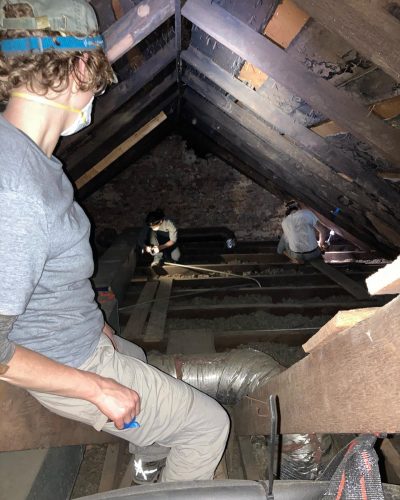
- Photo via the Pope's Tavern Facebook page -
Whether that first structure was an inn or not, there is some evidence to suggest the original building was eventually destroyed by fire. The house that now sits on the property was most likely built sometime around 1830. But even that date is based on an educated guess and not on written record. However, recent tests conducted by researchers from the University of Idaho, the University of Louisville, Indiana University, Clemson University, and the University of Alabama hope to shed some much needed light on the construction date of the current Pope’s Tavern. The research team collected samples of wood from the house in various locations that will be studied using dendrochronology. This will allow the team to determine the age of the samples and the year in which the trees were cut down. In turn, we will then know definitively when the Tavern was built, and if it was built in sections at different times, when each section was completed. There’s currently no ETA on the test results, but we are all anxiously awaiting the outcome. Finally, we will know for certain when the current house was constructed. And from there, we can begin to look even more critically at the folklore of the Tavern and begin to discern what may be true from what cannot be true.
Despite all that we do not know, we can say with certainty that Pope’s Tavern served a very important role during the Civil War. In an article printed in the Florence Times in 1910, we know that the Tavern was used as a hospital throughout the four long years of the war between the states. Although not the site of any major battles, the streets of Florence did witness many small skirmishes between the Union and Confederacy. Coupled with larger battles nearby, the city saw an influx of wounded and ill soldiers from both sides of the conflict. Soldiers taken to the Tavern, and other makeshift hospitals in the area, were tended to by the women of Florence who gathered to cook meals, sew garments, and provide comfort and aid to the injured. Though we don’t have any way of knowing how many soldiers passed through Pope’s Tavern, legend has it that 32 men died from their injuries at the home. They are reportedly buried in the Confederate section of the old Florence Cemetery.
After the war, the property changed hands several times before finally being purchased by the Lambeth family. It would serve as the Lambeth home, and for a time, as a boarding house, until purchased by the Florence Chamber of Commerce in 1965. The building was then donated to the city, restoration work took place, and finally the site became the Pope’s Tavern Museum we have today.
You may, by now, be wondering when exactly was Pope’s Tavern a tavern? Well, that is yet another mystery waiting to be solved. If there was a stagecoach stop and inn on the site, it seems fairly logical that there would also have been a tavern. After all, what could be better after a long, dusty day on horseback than a shot of good whiskey and a soft bed? But again, we have only local legends to back up this theory. We don’t know when the rumors of a former tavern officially began, nor do we know when the property began to be referred to as “Pope’s Tavern.” But it was this name the city gave to the renovated house, and it is that name it still carries.
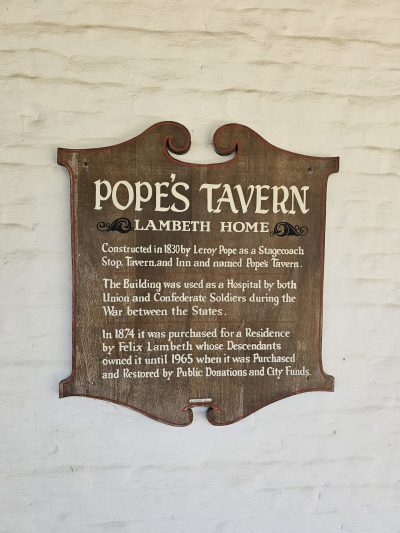
Today, the Tavern hosts a lovely little museum filled with artifacts that tell the story of Florence and the surrounding area. There are, of course, many items from the Civil War era on display. But there are also more prosaic items — the everyday items of the ordinary people — to peruse as well.
Perhaps the best part of the museum, and what sets it apart from others, is simply the people you’ll meet when you visit. You might encounter any number of student interns, professional archaeologists, and historians to share with you even more stories of the Tavern and the treasures it holds. These are passionate, dedicated people that are eager to share the history of Florence with you – even the not-so-nice parts. History in the South is not always easy. There’s a level of discomfort, even horrified disgust, that comes with discussing many episodes in our past. But you won’t find the hard topics glossed over at Pope’s Tavern. Here, the people aim to create a real, visceral account of history and to ensure the stories of the oppressed do not become the stories of the forgotten.


An exciting new feature emerges, April 2023
In the language of flowers, the magnolia symbolizes strength, endurance, and perseverance. And as I stood beneath those falling petals on that quiet February afternoon, I couldn’t help but to think how perfectly fateful it was that a magnolia should have sprouted behind Pope’s Tavern. The legends endure. And now we, the members of the Pope’s Tavern Archaeology Club, seek to help preserve the history and truth of this remarkable place.
In 2021, a team from the Office of Archaeological Research at the University of Alabama conducted tests that revealed several underground anomalies in the yard surrounding the Tavern. A veritable treasure trove of artifacts was recovered from their test pit and are currently undergoing preservation and further research. Then, in October of 2022, our club was born to facilitate the advancement of archaeological education through community based activities. We meet at least once a month to continue the excavation of our small, square hole and to piece together the story of Pope’s Tavern.
Every find, no matter how small, is potentially significant in the dating and history of the property. And while we’d love to find a nice, dateable piece of graffiti that says “Abe Lincoln was here,” we’re more than happy with our shards of transferware and amber glass. For the truth lies in the details, and the story of Pope’s Tavern is still being written.
A Few Artifacts from Pope's Tavern Archaeological Dig
I absolutely must thank Brian Murphy for all of his incredible research, insights, and support during the writing of this article.
It truly would not have been possible without him.
To learn more about Pope’s Tavern Museum and the Pope’s Tavern Archaeology Club,
visit the website by clicking the image above.

